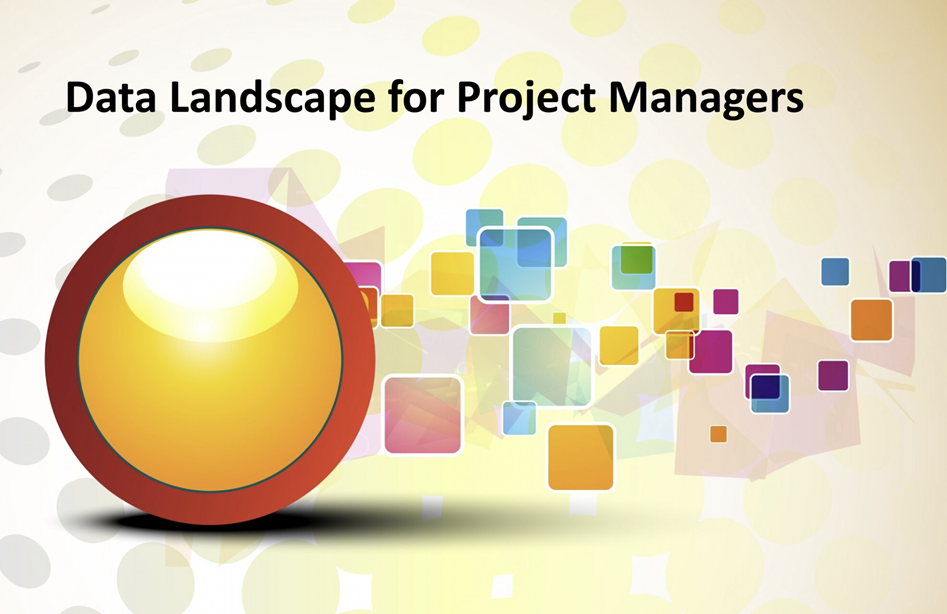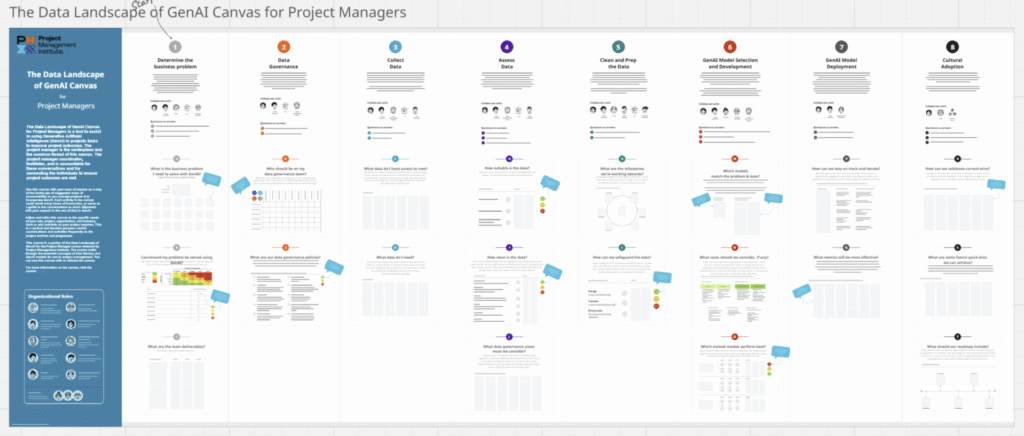
Status: Executive Brief
Author: Shahab Al Yamin Chawdhury
Organization: Principal Architect & Consultant Group
Research Date: April 2, 2023
Location: Dhaka, Bangladesh
Version: 1.0
Executive Summary
Generative AI (GenAI) is fundamentally transforming project management from a discipline of administration into a function of strategic orchestration. This summary distills the comprehensive “Data Landscape of GenAI for Project Managers” blueprint, providing leaders with a condensed overview of the core technologies, applications, governance imperatives, and strategic considerations for leveraging GenAI. The key takeaway is that successful adoption requires a dual focus: harnessing GenAI’s power to automate tasks and provide predictive insights, while rigorously managing the inherent risks through robust data governance and a strategic, phased implementation.
Part I: The Foundational Data Layer
The power of GenAI stems from its underlying models and the data they are trained on. For project managers, understanding two key areas is critical.
Core Technologies
- Large Language Models (LLMs): These are the engines behind most text-based GenAI. Built on the Transformer architecture, they are trained on vast internet-scale datasets, enabling them to generate reports, summarize documents, and even write code.
- Diffusion Models: This technology excels at creating high-quality images and other non-textual data, useful for generating visual prototypes or synthetic data for simulations.
The Critical Customization Choice: RAG vs. Fine-Tuning
A general model must be adapted for specific company needs. The primary strategic decision is how to provide it with domain-specific knowledge.
| Method | How It Works | Best For (PM Use Case) | Data Strategy |
| Retrieval-Augmented Generation (RAG) | Connects the AI to a live, external knowledge base (e.g., your project document repository). | Answering questions with real-time, dynamic data, like “What is the current budget status of Project X?” | Requires a focus on maintaining a clean, up-to-date knowledge base. |
| Fine-Tuning | Retrains the core AI model on a curated set of your historical company data. | Teaching the AI a specific, repeatable style or format, like “Draft a status report in our company’s official template.” | Requires a focus on creating high-quality, historical training datasets. |
Recommendation: A hybrid approach is often optimal. Use RAG for dynamic data and Fine-Tuning for embedding static knowledge and style.
Part II: The Application Layer Across the PM Lifecycle
GenAI provides tangible value in every phase of a project, creating a self-improving data feedback loop.
- Initiation & Planning:
- Automated Documentation: Instantly generate first drafts of Project Charters and Scope Statements.
- Predictive Estimation: Forecast costs, effort, and duration with up to 93% accuracy, reducing human bias.
- Intelligent Scheduling: Automatically create detailed Work Breakdown Structures (WBS) and optimized schedules.
- Execution, Monitoring & Control:
- Automated Reporting: Synthesize real-time data from PMIS tools (e.g., Jira) into automated status reports.
- Proactive Risk Management: Continuously scan data to identify emerging risks and suggest mitigation strategies.
- Intelligent Monitoring: Act as a 24/7 controller, flagging deviations from budget and schedule baselines.
- Closure:
- Systematic Lessons Learned: Analyze all project communications and documents to automatically extract and categorize key lessons.
- Performance Baselining: Feed final project data back into AI models to improve predictive accuracy for future projects.
Part III: The Governance & Risk Layer
The principle “garbage in, garbage out” is paramount. Poor data quality is the #1 reason GenAI projects fail. Effective governance is not optional.
Key Risks & Mitigations
- Factual Hallucinations (Making things up):
- Risk: An AI confidently reports a false project status or invents stakeholder feedback.
- Mitigation: Use RAG to ground responses in factual data. Mandate human-in-the-loop validation for all critical outputs.
- Algorithmic Bias:
- Risk: An AI trained on biased historical data unfairly recommends certain individuals for roles or misjudges risk based on demographics.
- Mitigation: Audit and curate diverse training data. Implement fairness metrics and continuous monitoring.
- Data Privacy & Security:
- Risk: Team members pasting sensitive project information into public AI tools, leading to data leaks.
- Mitigation: Enforce strict governance prohibiting the use of public tools for sensitive data. Prioritize secure, on-premises, or private cloud AI solutions.
Part IV: The Market & Strategic Layer
Market & Adoption Strategy
The AI in Project Management market is projected to reach $14.45 billion by 2034. To capture this value, organizations must avoid the “ROI Paradox” where large-scale initiatives fail to show returns.
The “Start Small, Scale Smart” Strategy is Essential:
- Align: Link every AI initiative to a clear business objective.
- Pilot: Begin with small, high-impact projects to demonstrate value (e.g., automating one type of report).
- Govern: Ensure a robust data governance framework is in place before scaling.
- Upskill: Invest in training PMs in data literacy, prompt engineering, and ethical AI judgment.
- Measure: Track a balanced scorecard of KPIs, including efficiency gains (time saved), quality improvements (forecast accuracy), and financial metrics (ROI).
The Future of the Project Manager
GenAI will automate up to 80% of administrative PM tasks by 2030. The role is not disappearing but is being elevated from a tactical administrator to a Strategic Orchestrator. The future PM’s value will come from uniquely human skills that AI cannot replicate:
- Strategic & Systems Thinking
- Ethical Judgment & AI Governance
- Emotional Intelligence & Leadership
- Complex Problem-Solving & Negotiation
Final Recommendations
- Start Small, Scale Smart: Prioritize high-impact pilot projects to prove value before scaling.
- Govern Data First: A robust data governance framework is a non-negotiable prerequisite.
- Use a Hybrid Customization Model: Leverage RAG for dynamic data and Fine-Tuning for static style and knowledge.
- Invest in Your People: Upskill PMs to become strategic orchestrators, not just tool operators.
- Embed Risk Management: Integrate GenAI-specific risks (hallucination, bias) into all project risk assessments.
Checkout this Miro Board: Data Landscape of GenAI Template | Miroverse
